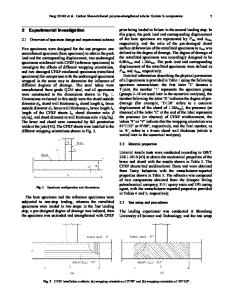Numerical and Experimental Investigations of the Effect of Melt Delivery Nozzle Design on the Open- to Closed-Wake Trans
- PDF / 10,888,458 Bytes
- 15 Pages / 593.972 x 792 pts Page_size
- 39 Downloads / 285 Views
ODUCTION
THE gas atomization process, particularly ClosedCoupled Gas Atomization (CCGA), is an efficient method for the production of ultrafine, highly spherical metal powders. In principle, CCGA is straightforward: high-pressure gas jets impinging upon a molten metal stream are used to disrupt the stream, breaking it into a spray of fine droplets. The gas is delivered via a die that will typically be of either the annular slit or discrete jet type. In an annular slit die, the gas passes through a narrow channel between the die and the outer surface of the melt delivery nozzle, while in a discrete jet die, the gas is delivered through holes machined directly into the die. Liquid metal is then fed down the central bore of the melt delivery nozzle, wherein the former wets the nozzle tip (a process termed pre-filming, which is itself dependent upon the gas-flow conditions) and is stripped off the circumferential edge of the nozzle by the gas (see Figure 1). However, due to hydrodynamic and thermal interaction between the high-pressure gas jets and the molten metal stream, especially near the tip of the melt delivery nozzle, the technique is in practice very complex
SHAHED MOTAMAN, CFD Research Fellow, is with the Institute for Innovation in Sustainable Engineering, University of Derby, Derby, U.K. and also with the Institute of Materials Research, Faculty of Engineering, School of Process, Environmental and Materials Engineering, University of Leeds, Leeds, LS2 9JT, U.K. Contact e-mails: [email protected]; shahed.motaman@gmail. com ANDREW M. MULLIS, Professor, Director, and ROBERT F. COCHRANE, Senior Lecturer, Head of Materials Programs, are with the Institute of Materials Research, Faculty of engineering, School of Process, Environmental and Materials Engineering, University of Leeds. DUNCAN J. BORMAN, Lecturer, is with Engineering Mathematics and Modelling, School of Civil Engineering, University of Leeds, Leeds. Manuscript submitted July 15, 2014. METALLURGICAL AND MATERIALS TRANSACTIONS B
and challenging for both academic understanding and industrial practice. The gas-flow pattern around the melt delivery nozzle plays a crucial role in the gas atomization process and may affect the particle size distribution and atomization efficiency. In previous studies, the gas-flow pattern around the melt delivery nozzle has been divided into two parts: the near-field and the far-field regions. The near-field is an area ranging from 3 to 4 D (D being the diameter of the tip of the melt delivery nozzle at which pre-filming occurs; see Figure 1) downstream of the melt nozzle tip and in which primary breakup occurs. Beyond this is referred to as far-field and is the region in which secondary breakup occurs. Typical gas-flow patterns for a closed-coupled atomizer are shown in Figure 1. The gas exiting the die is underexpanded, and upon encountering the low pressure region near the melt delivery nozzle, will expand rapidly before compressing again, forming a series of recompression shocks. The reflection of the expansion wave from the sonic boun
Data Loading...











